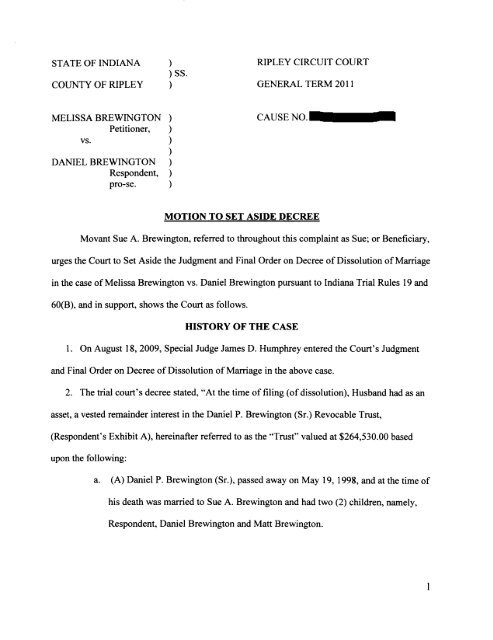Preparing Your Motion to Vacate Foreclosure
If you are a current homeowner, one of the options open to you is a motion to vacate foreclosure. A motion to vacate is not a foreclosure. Instead, it is an order that "withdraws" the foreclosure process from you. This can only be done in the county in which you live. In most counties, the process for this is indicated by the letter "C.”
The Eleventh U.S. Circuit of Appeals in Atlanta has recognized a set of rules for determining when a property is in default. These rules, referred to as the "Federal Rules of Procedure,” have been codified in the Manual of Uniform Construction Regulations (UMCR). Among these rules is the "Motion to Vacate,” which is also commonly referred to as the "VAC Rule.” In most cases, if there has been a default and the homeowner has been given a cure or redemption period, this is the date that the lender will file the motion to vacate. In addition to the Eleventh Circuit, several other lower Federal courts have applied the Federal Rules of Procedure principles. They have ruled on various matters relating to foreclosure and the vacating of judgments.
One of the underlying reasons that courts have the discretion to vacate a foreclosure proceeding is that the homeowner may have already cured the default. In cases involving a federal question, this is referred to as the "res judicata" rule. When a debtor files a motion to vacate, they request that the court enter a temporary restraining order or quick ruling allowing them to resume the foreclosure. The court must vacate the judgment on the basis that it is based on the plaintiff's failure to cure the default.
Some homeowners believe that they have the option of merely crossing their fingers and hoping that the default will go away. They may even choose to ignore the letter of judgment and await further instructions from the court. However, this is not always possible. If a foreclosure action has been filed against the same property in multiple property counties, the process can be much less complicated. There may be additional county hurdles to cross, and a judgment will continue to accumulate until the plaintiff moves to have the foreclosure stopped in the courtroom.
The court will only vacate a foreclosure if it can find no chance of the property being recovered. There are two basic types of defenses to foreclosure actions: a claim for a mistake of fact and a request for legal prejudice. A claim for error is a claim that the plaintiff was subject to an intentional act or in bad faith (or negligence). If the plaintiff can establish this, the court can enter a judgment in favor of the defendant and therefore clear the way for the foreclosure to proceed. A claim of legal prejudice relates to the existence of facts that justify a reasonable person's belief that a rectification of the underlying debt would result in a better financial position. This includes any bank statements or their representatives that harmed the plaintiff's chances of recovering from the mortgage loan.
Another common reason for homeowners to seek relief from a foreclosure sale is based on taxes. If there is a deficit between the sale proceeds and the balance owed on a mortgage, the property owner may be able to seek relief based on the difference. For this to work, the tax owner must request a certificate of taxes. County auditors typically issue the tax certificates, but the Internal Revenue Service also publishes them. When seeking relief from foreclosure, the tax certificates are usually needed immediately so that the homeowner can get the money due immediately.
Last, a property owner can also seek relief from foreclosure when a judgment has been entered against them in a civil court. The judgment may be for one of two different reasons. First, it may be a default judgment - in other words, the defendant fails to show up for their initial appearance, and the court enters a default judgment. Second, the decision may be an award of equity. An equity judgment is when the court orders a lender to sell the debtor's property to recoup the money that the debtor owes to a creditor. For example, if a debtor has judgments against them for breach of contract, fraud, etc., and they fail to appear at their first hearing, the debtor will lose their first lien on the property and will be assessed a deficiency.
Many homeowners will attempt to defend against a motion to vacate foreclosure with a motion to dismiss. A motion to dismiss is simply an argument that the court should not have the right to grant the plaintiff a remedy. In most cases, courts do not allow motions to dismiss. If the defendant did not act appropriately or did not have the proper venue to file the complaint, they are not allowed to argue their case in court. However, there is one exception to this rule - if the property owner can prove that there were mistakes or omissions in the process of gathering the evidence that led to the default judgment. They may be able to defeat a motion to dismiss. If the plaintiff can prove that the defendant had a piece of incomplete information or failed to act by the law, then the plaintiff may be able to get their judgment vacated or have it thrown out.
